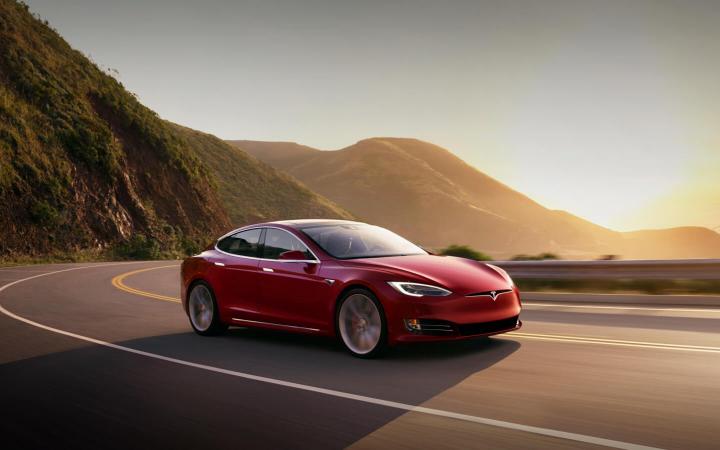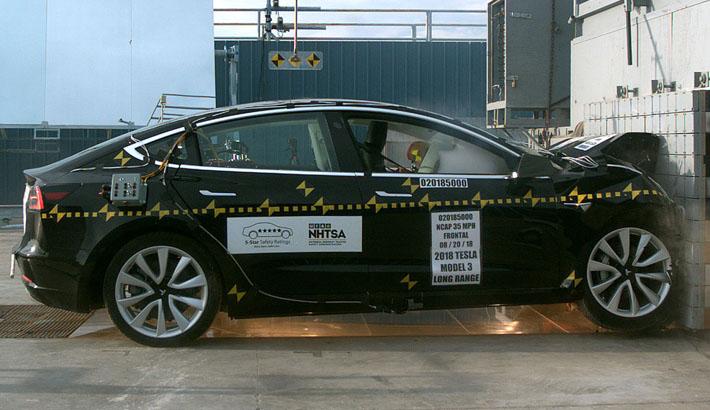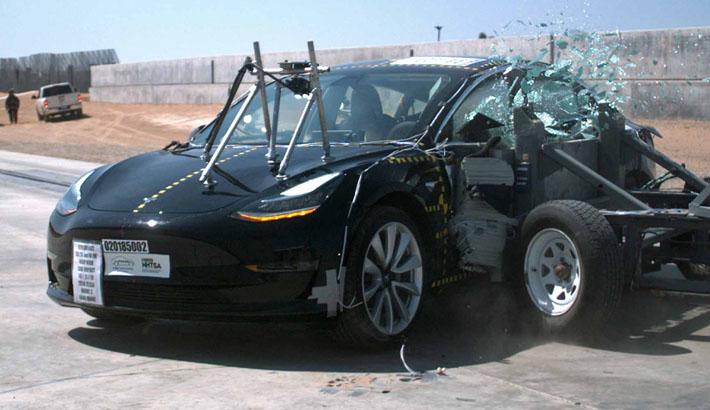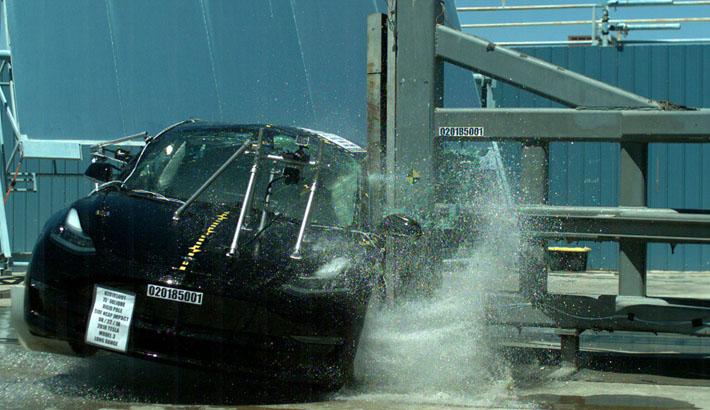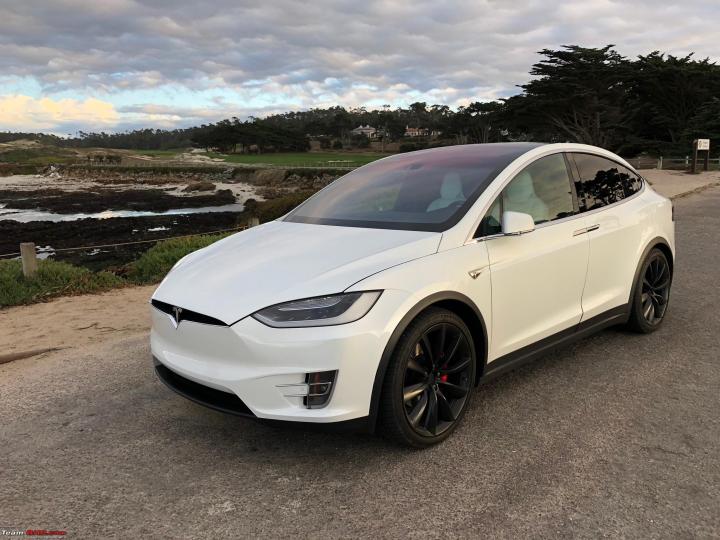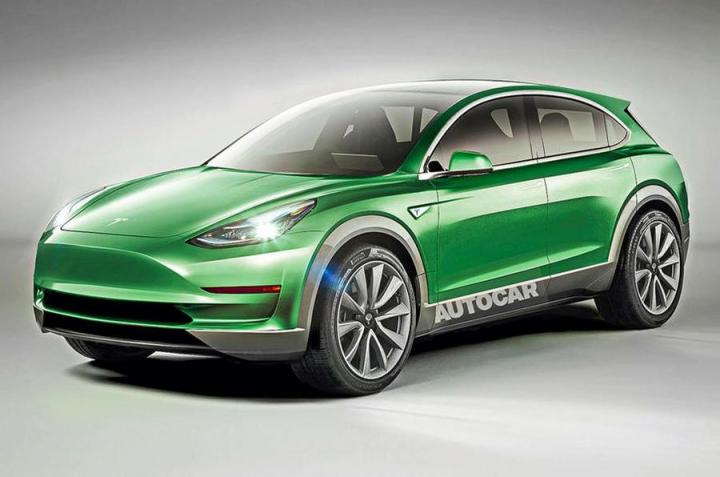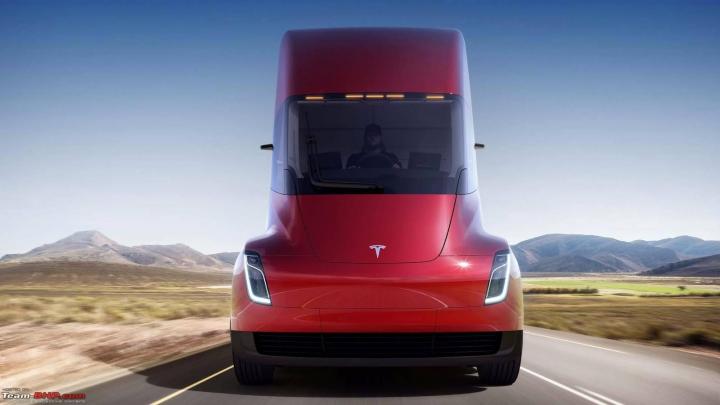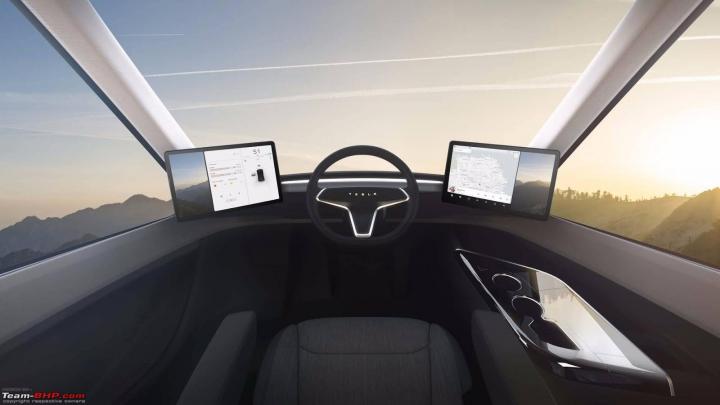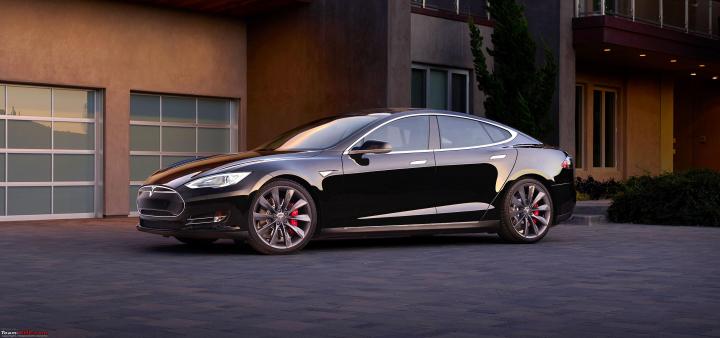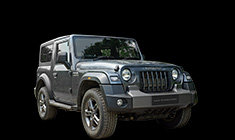News
USA: Tesla outsells Mercedes-Benz in Q3 2018
Tesla sold 69,925 units of its electric vehicles in the period July - September 2018. It has outsold Mercedes-Benz, which sold 66,542 units in the same period.
The company has, for the first time, beaten the sales of the German company in the USA. The electric carmaker has also started production of the dual motor Model 3 of which, 5,300 units were made in the last week of Q3 2018.
In the same period, BMW sold 71,697 units, 1,754 more than Tesla. However, Tesla is expected to surpass BMW in Q4 of 2018.
Tesla has also revealed that it delivered 83,500 vehicles worldwide during the period July - September 2018.
Source: Business Insider
News
Elon Musk to step down as Tesla chairman
In August 2018, Elon Musk tweeted about taking Tesla private. The US Securities and Exchange Commission (SEC) has charged him and the company for fraud over this and as part of a settlement deal, Musk will resign as the chairman of the electric car company.
SEC has also charged Tesla for failing to have the required disclosure control and procedures over Musk’s tweets. As part of the settlement, both the company and Musk have been fined US$ 20 million each.
This settlement also has riders like Musk being ineligible to be the chairman for the next 3 years, appointment of 2 independent directors to the company's board, a committee of directors to oversee Musk’s communications and place additional controls. Further, the fine amounts would be distributed to investors affected under a court approved process.
The settlement will stand post a court approval in which Tesla and Musk neither admit nor deny the charges levied by the SEC. Elon Musk will continue as the CEO of the company.
- Tags:
- Indian
- International
- Tesla
- CEO
News
Tesla Model 3 scores 5-stars in NHTSA crash tests
The National Highway Traffic Safety Administration (NHTSA) has awarded Tesla Model 3 a 5-star crash rating. With this, the all-electric car maker has received 5-star crash ratings across its line-up.
The Tesla Model 3 received 5 stars in the frontal, side and rollover crash tests. The frontal crash test involves a simulation of a head-on crash at 56 km/h while the side tests involve a pole test and a collision with a moveable barrier on the side at 62 km/h. The rollover test measures the risk of rollover in a single-vehicle incident.
The car comes equipped with frontal collision warning, lane departure warning, imminent crash braking and dynamic brake support. These technologies are recommended by NHTSA and have met performance tests.
Back in 2013, the Tesla Model S not only received a 5-star NHTSA rating, but also broke the testing equipment at an independent lab. The company’s Model X also received a 5-star rating.
- Tags:
- Indian
- International
- Tesla
- crash test
- NHTSA
News
Rumour: Tesla board to consider a move after CEO breakdown
According to a media report, Tesla Chairman and CEO, Elon Musk has revealed that he is under tremendous stress. This has resulted in a fall in the share price of the electric carmaker and has put pressure on the company board to take action.
Earlier this month, Musk announced on Twitter that he plans to take Tesla private. However, government regulators launched an investigation into this as the announcement could have violated disclosure norms. It is also reported that the CEO clocks in around 120 hours every week and struggles to sleep at night. This has been taking a toll on his health.
One of the options rumoured to be discussed includes Musk stepping down or hiring a No. 2 executive who would assist the CEO. Musk also said that he has no immediate plans of stepping down from his positions in the company. Apart from Tesla, he is also the CEO of SpaceX and Founder of The Boring Company.
Source: TOI
News
Elon Musk plans to take Tesla private
Tesla CEO Elon Musk has proposed on Twitter that he plans to take the electric carmaker private. The announcement caused a frenzy in the NASDAQ stock exchange and trading had to be temporarily halted.
The move would need to be finalized through a vote of shareholders. In an email to Tesla employees, the CEO explained the possible ways to go forward as well as the reason for going private. At present, being a publicly listed company, the all-electric carmaker has to stick to a quarterly earnings cycle which prevents Tesla from making accurate long-term decisions. Further, fluctuations in the share price could act as a distraction to many employees as well.
According to Musk’s plan, the company would offer US $420 per share, US $40 more than the previous day’s trading value. Shareholders wanting to stay invested can continue to hold the company shares while employees would be able to buy or sell their holdings periodically.
Musk also revealed that he held 20% shares of Tesla and there are no plans to merge the company with SpaceX, although both companies will have a similar ownership and governance structure.
Source: Electrik
News
Rumour: Tesla Model Y could be made in China
A teaser image of the Tesla Model Y was released at the company's annual shareholders meeting earlier this month. Now, media reports have indicated a possibility of the electric carmaker setting up a new car factory in China for the all-electric compact crossover.
On May 10, Tesla (Shanghai) Co. Ltd. was registered in China. The move follows the Chinese authorities' decision to remove the 50% cap of foreign ownership rule for electric vehicle (EV) companies. Tesla was already trying to build a factory in Shanghai without a local partner, but their requests were earlier denied.
Tesla's battery partner, Panasonic, revealed on May 10 that they would be building batteries in China and USA alongside the carmaker. According to various analysts, the company could also fast track the production of the Model Y by producing it in China. The country is not just the world's largest auto market, but also the consumer of 50% of all EVs made globally. The higher demand, combined with the reduction in import duties, could see the Model Y go on sale in just 24 months. Tesla CEO, Elon Musk has also told the media that the Fremont facility is running at full capacity.
The Model Y will be based on the platform currently underpinning the Model 3. It is expected to use a new flex circuit technology instead of the regular wiring harness to reduce the complexity of wiring in an electric car. The technology uses thin conductors which are sandwiched between layers of plastic mouldings. It will replace the bulky wiring harnesses in the current cars which are difficult to install. The Model 3 is said to have over 1.5 km of wiring, but the Model Y’s new flex circuits could reduce that to just 100 m.
Source - Autocar
News
British man caught off driver's seat with Autopilot on
Bhavesh Patel, a resident of Nottingham, pleaded guilty to dangerous driving in a court on April 20, 2018. He was recently caught on video sitting in the front passenger seat of his Tesla Model S with the Autopilot on.
According to the eyewitness who recorded the video, Patel was seen sitting on the front passenger seat with his hands behind his head. There was moderate traffic on the road at the time and vehicles were moving at about 64 km/h.
The local police issued a notice to the driver after the video went viral showing Patel, the sole occupant of the car of the driver seat on the M1 highway. His driving license was suspended for 18 months and the court also ordered him to carry out 10 days of rehabilitation in addition to 100 hours of unpaid work and levied a fine of GBP 1,800. Police issued a statement saying that he not only endangered his own life, but also of others on the highway.
Tesla has said that the autonomous features in their cars are designed to work in tandem with an attentive driver. Further, the driver must be able to take over the control of the car at all times.
Source - Herts Police Youtube channel
- Tags:
- Indian
- International
- Tesla
- Model S
- Autopilot
News
Tesla-based electric car racing series gets FIA approval
Electric Production Car Series (EPCS), the first all-electric, zero-emissions motorsport racing series promoted by Electric GT Holdings Inc. has got the approval from the International Automobile Federation (FIA). The approval comes after a successful crash test of the Tesla Model S P100D-based race car. The first race is scheduled to be held by the end of the year.
Competitors will race in identical machines. In race trim, the EGT Tesla P100DL 2.0 race car produces 778 BHP and 995 Nm. For qualifying, the electric motors will be turned up to 785 BHP. According to Electric GT, the race-spec car is 500 kg lighter than the stock Model S P100D. It is powered by a 100 kWh lithium-ion battery which offers a racing range of 90 km. The race car is claimed to accelerate from 0 to 100 km/h in 2.1 seconds. Unlike the production car, the EPCS race car has a front splitter along with a rear wing to improve the cornering ability. It is equipped with OMP safety equipment, Alcon dual-circuit hydraulic race brakes, R53 pushrod suspension and BComp composite bodywork. Custom designed Pirelli P Zero slick and wet tyres will be used for the races.
Up to 20 racers will participate in 3-heat qualifying based races that will include day and dusk races of 60 km each. Additionally, on circuits where possible, a drift race will be organized between the top two finishers and two fan-voted drivers for extra championship points.
This FIA approval makes EPCS the second electric car based racing series after Formula E. The exact schedule as well as the locations for the races has not yet been finalized.
News
Tesla's first electric truck unveiled
Tesla has revealed details about the Semi - its first electric truck. The vehicle will be available in two configurations - with 480 km and 800 km ranges with a full load.
The truck has a sloping front end with a large shatterproof reinforced windscreen. There are no door handles or mirrors. The truck also gets a front storage compartment like other Teslas. The driver sits in the middle, which Tesla claims, improves visibility.
On the inside, two large touchscreens flank the centrally positioned steering wheel. Only the hazard button gets a dedicated switch, while all other functions are controlled by the two screens. The outer edges of these screens display the outside of the truck and function as rear view mirrors. Drivers will also get a smartphone app to manage their trucks. Features like autonomous, semi-autonomous driving and collision warning are standard. The batteries are placed low, in an attempt to lower the truck's center of gravity and reduce the risk of roll overs, while the truck also gets an anti-jack-knifing technology.
The truck is powered by 4 independent motors that are located between the rear axles of the truck. Tesla claims a 5 second 0-60 mph time without any load and 20 seconds when fully loaded at over 36,000 kg. The truck is also claimed to maintain a speed of 105 km/h on a 5% grade under full load.
The company will also be setting up solar powered Megachargers for these trucks. These will be able to charge a truck with up to 640 km range in 30 mins. Production for the truck is scheduled to begin in 2019.
News
NTSB (USA): Over-reliance on technology led to Tesla crash
The National Transportation Safety Board (NTSB) - an independent U.S. government investigative agency, has come up with a report on the May 7, 2016 crash that killed a Tesla driver when his car collided with a truck. The car's autopilot function was engaged at the time of the crash.
In the crash, a 2015 Tesla Model S 70D car struck a semitrailer. At the time of collision, the truck was making a left turn from the highway. The car struck the right side of the truck, crossed below it, and then went off the road. The impact with the underside of the semitrailer tore off the roof of the car.
The report indicates that the crash was a result of the truck driver not yielding to the car and the Tesla driver's lack of attention and over-reliance on vehicle automation. The frequent and excessive use of the autopilot function resulted in the driver getting too dependent on the technology and not paying attention on the road. The board not only faulted the Tesla driver for not paying attention, but also noted that the autopilot did not do an adequate job of detecting other traffic. The system also did not inform the driver early enough to allow for enough reaction time.
The board issued seven suggestions at the hearing - including three for Tesla and every other automaker that offers a level 2 self-driving car. The Society of Automobile Engineers defines 6 levels of automation from fully manual to fully autonomous. In a level 2 system, the car controls the steering, acceleration and braking, but it is the human that is responsible for monitoring the surroundings and he/she must be ready to take over in case the system fails. The NTSB board suggested that manufacturers should not let a product be used, in a manner that is "inconsistent with its design." The board members also asked for recommendation on systems for deciding whether drivers are actually paying attention behind the wheel.
A board member mentioned that Tesla allowed the driver to use the autopilot system outside the environment for which it was designed. Tesla has said that the company will work towards making customers understand that autopilot is not a fully autonomous system, but needs the driver to be attentive at all times.
- Tags:
- Indian
- Autonomous Vehicle
- Tesla
Pages




